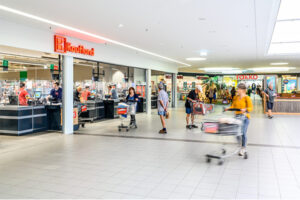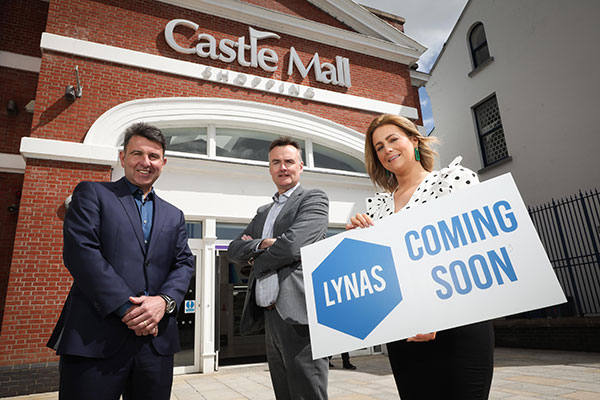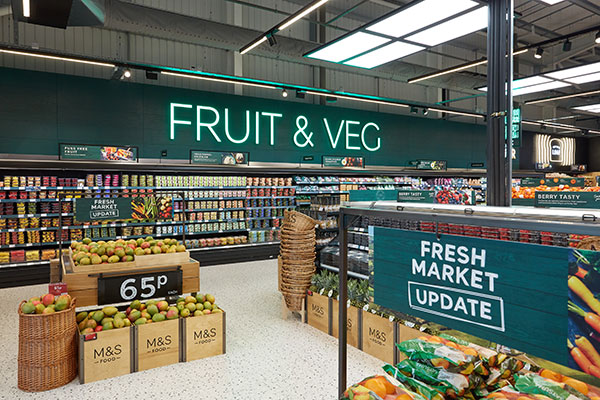As a brand-new study by the European Retail Institute (EHI) shows, the sales of Germany’s 1,000 largest online stores increased by 33% from 2019 to 2020, or 17.1 billion euros. Food & Beverage (F&B) accounted for only 1.3% of online sales.
For shopping centers, in particular, this opposing trend of rising food demand and declining non-food demand represents an enormous challenge. It is a challenge which, due to its speed, demands equally rapid strategic measures from the management of the companies concerned.
When asked how best to meet this challenge, the latest ACROSS survey of leading European center operators provided a clear, unambiguous answer:
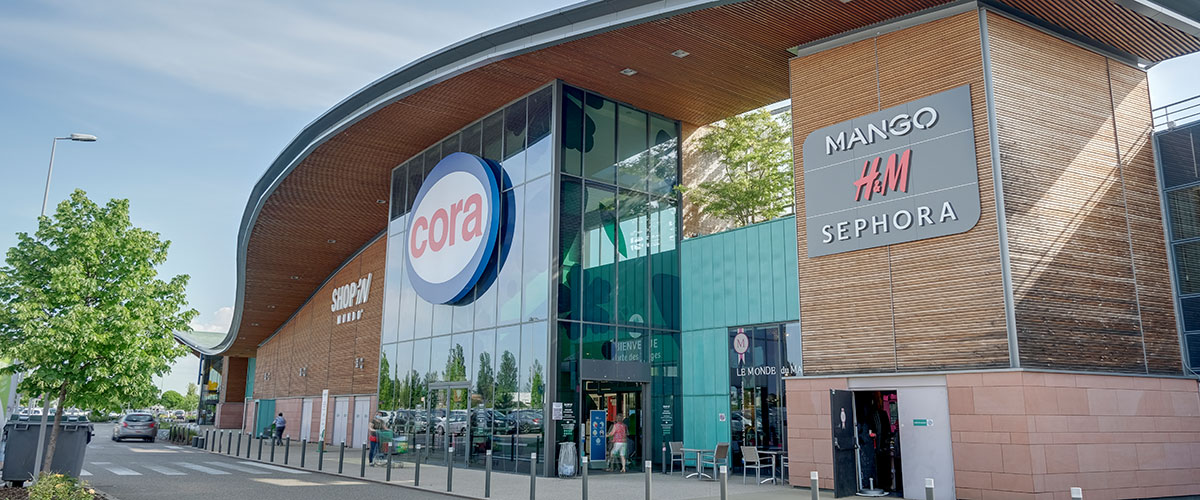
During the period of the coronavirus pandemic, food anchors have become a lifeline, especially to those shopping centers whose non-food tenants are particularly suffering from the “online sclerosis” of their sales.
There is a logical consequence: Shopping centers as landlords and their F&B tenants are now required to enter into strategic marketing partnerships at eye level. It is an alliance that goes beyond the defensive effect–containment of online competition–and holds a lot of offensive potential. Food anchors are ideally suited to put centers back on the road to success in the upcoming years.
Online brings the goods to the customers, offline brings the customers to the goods
What prompts centers and food anchors to move together strategically is, therefore, the joint effort to attract more customers. “Food anchors and hypermarkets are strong traffic drivers. They serve daily and essential needs as they bring a regular, frequent, and recurrent flows of visitors,” says Mael Aoustin, CEO of Belgian real estate company Galimmo.
The non-food retailers at the centers are benefiting from this pull. It has given them the chance to recapture the sales they have lost to pure online throughout the coronavirus crisis.
Stronger footfall, longer dwell time, higher total purchases
The footfall-increasing effect of food anchors on weekdays, from Monday to Friday, is particularly relevant in an economic context. Victor Fernandez, Asset Manager at Merlin Properties, points this out. The first few days of the week are “generally the most difficult days for shopping centers, especially in the morning”. Christina Santos, Managing Director Sonae Sierra analyzes: “A strong food offer has always been synonymous with lengthier visits, improved comfort and service, and, thus, increased preference and overall expenditure.”
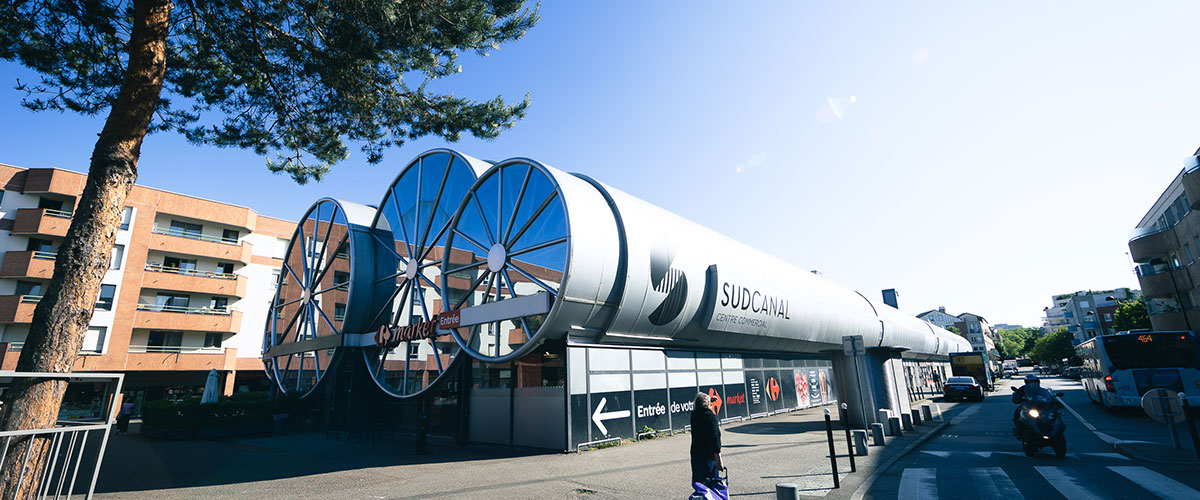
However, the economic benefits that a broadly assorted F&B provider, whether in hyper- or supermarket format or as a food court, derives from its presence at the shopping place are equally evident. Mael Aoustin: “Shopping centers are convenient and easily accessible locations, with high visibility, thereby making them popular destinations. They provide appealing features for customers who are looking for both convenience and social interaction.”
Mutual sales stimulation between food, near-food, and non-food
Francois Matray, CEO of the French real estate investor MRM, emphasizes the mutual stimulation of sales through the complementary offer of food and non-food assortments at one center: “Compared to a stand-alone location, a supermarket benefits from the critical size of the retail offer of the shopping center, which has stores that complement its offer and, thus, enrich the experience of the customer.”
A special bundling effect comes from the near-food range: Near-food, which consists of cosmetics, cleaning items, and household articles, forms the bridge between food and non-food shopping. The topic of health and beauty is a top priority for coronavirus-sensitive consumers and lends itself to joint promotions by the supermarkets, drugstores, and health food stores at centers.
Hypermarkets radically streamline their non-food assortment
Excessive non-food assortments at hypermarkets call into question the harmonious coexistence of food anchors and tenants from the consumer goods retail sector. It is up to the center operator to strike the right balance between too much and too little overlap of product ranges. Victor Fernandez notes: “With some exceptions, the products sold by food operators are usually the same and they lack differentiation, but what they can do is compete price-wise by reducing margins.”
However, it is also a fact that non-food discounters, which lease space at centers here and there, are engaged in a fierce price war, not only with online providers, but also with the specialist markets and stores at the shopping places concerned. Primark versus Zalando and H&M–the disadvantage of margin crushing outweighs the advantage of increased footfall. Therefore, the resistance of many center managers to an increased discounter share in the tenant mix is great. According to the latest EHI findings, only 15% in Germany are in favor of promoting low-price stores.
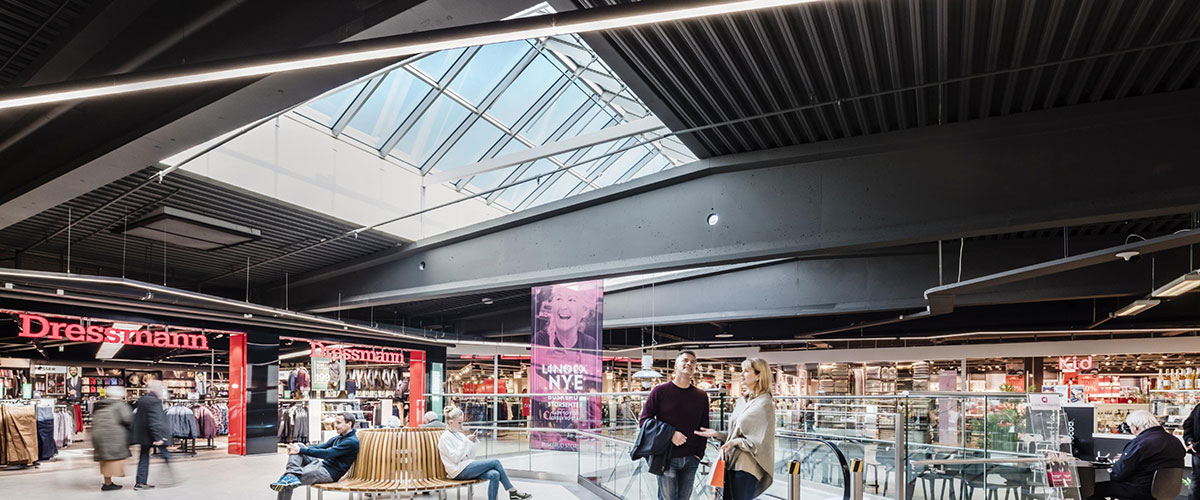
The large-format, deep-stocked food retailers, on the other hand, are pursuing a differentiated strategy. They advertise an improved price/performance ratio, while primarily increasing quality. They are focused on freshness and the regional origin of their food assortments, pushing environmentally friendly packaging, and taking many initiatives to reduce CO2 footprints. With such eco-benefits, a food anchor at shopping centers attracts an increased number of LOHAS (Lifestyle of Health & Sustainability) shoppers.
Another eco-focus: Europe’s center operators are investing heavily in green technology: “Buskerud Center was the first shopping center in Norway to use CO2 as a refrigerant for carbon-neutral comfort cooling for its entire building,” says Sanna Yliniemi, Vice President Center Management at Citycon.
Kaufland repositions itself as a food anchor
Hypermarket chains, which, in the past, preferred to pursue a stand-alone location policy, have recently been prompted to slip into the role of the food anchor of shopping centers more frequently than before. The development of the large supermarket chain Kaufland, which Dr. Angelus Bernreuther, Head of the Department for Institutional Investors and Real Estate Management at Kaufland Dienstleistung GmbH & CO KG, explains in an exclusive interview with ACROSS, is downright exemplary: The first-generation Kaufland stores were hypermarkets that had 5,000 sq m of sales space and a non-food share of up to 50%, he says. “We have said goodbye to that. Now our competence is largely in food. When we lease at centers, we target sales areas of 3,000 sq m.” The consistent focus on food & near-food (= FMCG) makes Kaufland’s product range strategy highly compatible with shopping centers. The order of the day is to not be a competitor of, but a synergetic complement to the non-food specialty stores. Bernreuther: “We and the centers support each other as local suppliers.”
EHI study: centers value food retailers as footfall drivers
The Kaufland chain’s directional decision towards a stronger presence at centers resonates strongly in the industry. Overcoming the coronavirus / online crisis together with food anchors and forging ahead with new strategies that reflect changing shopper needs is the declared strategy of a large number of European center operators. In its “Center Management in Focus 2021” study, the EHI Institute reports that 70% of the center managers surveyed in Germany (the statements of those responsible for retail parks were evaluated separately) currently favor the local supply of everyday goods, because they expect this to provide “positive impetus for long-term strategic positioning”.
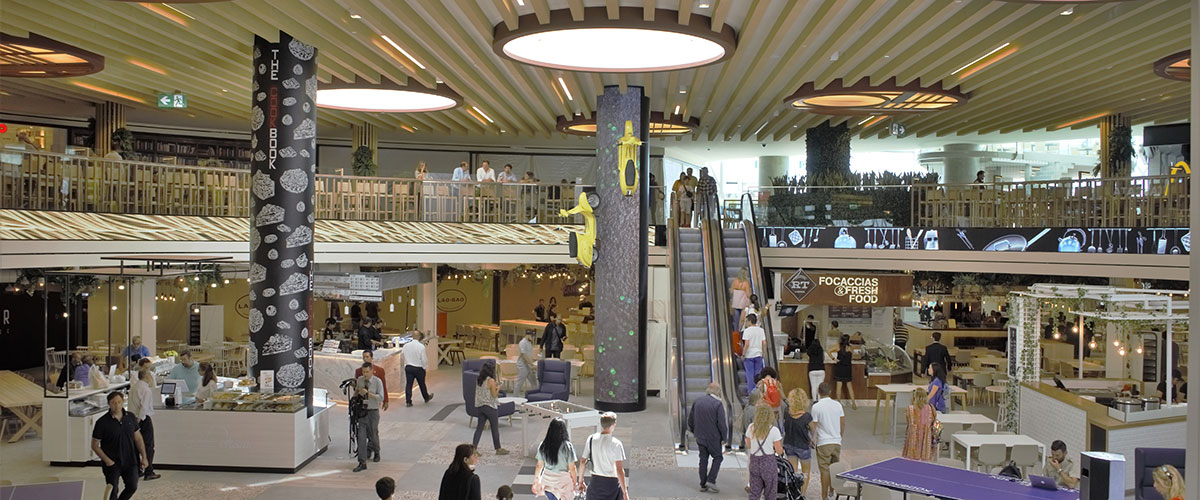
The Kaufland High Five study, published in spring 2021, quotes Alexander Otto, Chairman of the ECE Management Board, as saying: “Local suppliers continue to play an important role at the centers.” In other words: Centers and food anchors would do well to collaborate now.
Among managers of retail parks, 67% agree with this assessment. According to EHI, only the preference for expanding the range of restaurants and cafés and improving the quality of stay is stronger. This is advocated by 79% of respondents and 88% of retail center managers.
Centers focus on local supply and food
Local supply is the key term for structural change in Europe’s SC landscape, a development accelerated by the big bang of the pandemic and digitalization. Pure online stands for remote supply across countries and continents–for a huge, globally sourced selection of consumer goods. Suburban and urban shopping places with a sales area of 15,000 sq m or more and 30,000 to 40,000 consumers within a catchment radius of 30 kilometers, on the other hand, are bastions of regional local supply that feature all the important goods for daily and weekly needs. In addition, they optimally serve the need for one-stop shopping, which has been driven by the coronavirus. In contrast to the smaller stand-alone retail units, they not only offer the convenience of planned shopping (satisfaction of needs), but the emotion of experiential shopping (fulfillment of wants) as well.
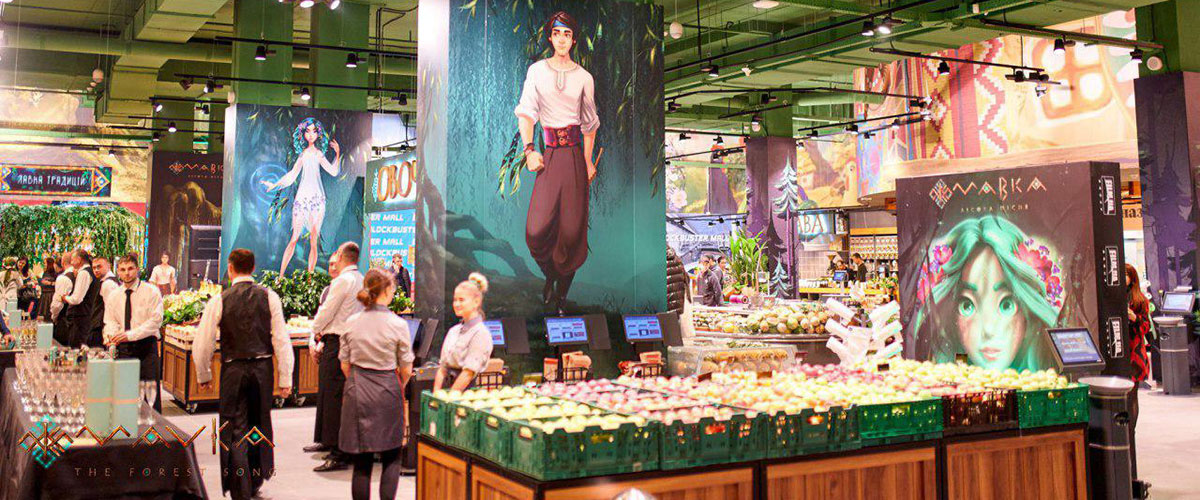
Centers with food anchor DNA
Close cooperation between centers and food anchors is not a revolutionary change of course in countries such as France, the UK, Switzerland, and Austria, but a tradition that has been cultivated for decades. Hypermarket chains such as Carrefour, Leclerc, and Auchan in France, Tesco in the UK, Migros in Switzerland, and Interspar in Austria have evolved into 360-degree centers by building additional retail space. “Of the current 120 shopping malls in Austria, only six have no food providers,” reports consulting firm Standort+Markt. It goes without saying that at SES, a member of the Salzburg-based Spar Austria Group, the country’s largest center operator, which is also present in northern Italy, Hungary, and Croatia, Interspar hypermarkets play a predominant role as food & footfall anchors, given this original DNA.
Most centers in Central Eastern Europe were also conceived with a strong affinity for food–for plausible reasons: “When the first shopping and entertainment centers began to appear in many post-soviet countries, the share of spending on food and FMCGs was about 50% of the monthly income in many post-soviet countries,” according to a statement by the Ukrainian center investor NAI.
The development of shopping centers in the USA was quite different. On the other side of the Atlantic, it was the large department stores and not the food markets that acted as customer magnets and footfall drivers right from the start. With the advance of online retailing, disaster struck many malls in the States for lack of an attractive food anchor. As Amazon began its triumphant march, department store legends of yore, generalists like Sears and Macy’s, plunged into crisis, depressing productivity at the centers at which they were once customer magnets. Even the legendary Mall of America in Bloomington (Minnesota), which boasts a sales area of 230,000 sq m, the world’s largest shopping center, has seen better days.
Tenants and landlords on the way to connected retail
Food anchors in super- and hypermarket formats have proven their worth as drivers of innovation at a time when, in the emotional state of consumers, concerns about climate change are pushing aside coronavirus fears. As the reports from Galimmo, MRM, MPC, Merlin, Sonae Sierra, ADG, Citycon, NAI, and Kaufland show, a digitalization fever has–better late than never–gripped the industry. Increasingly, individual initiatives by tenants are being placed under an overall concept. “We have a mobile app via which we integrate personalized special offers available from all our partners and share the program of activities at our neighborhood centers,” says Yuri Usharov, Commercial Director of the ADG Group.

